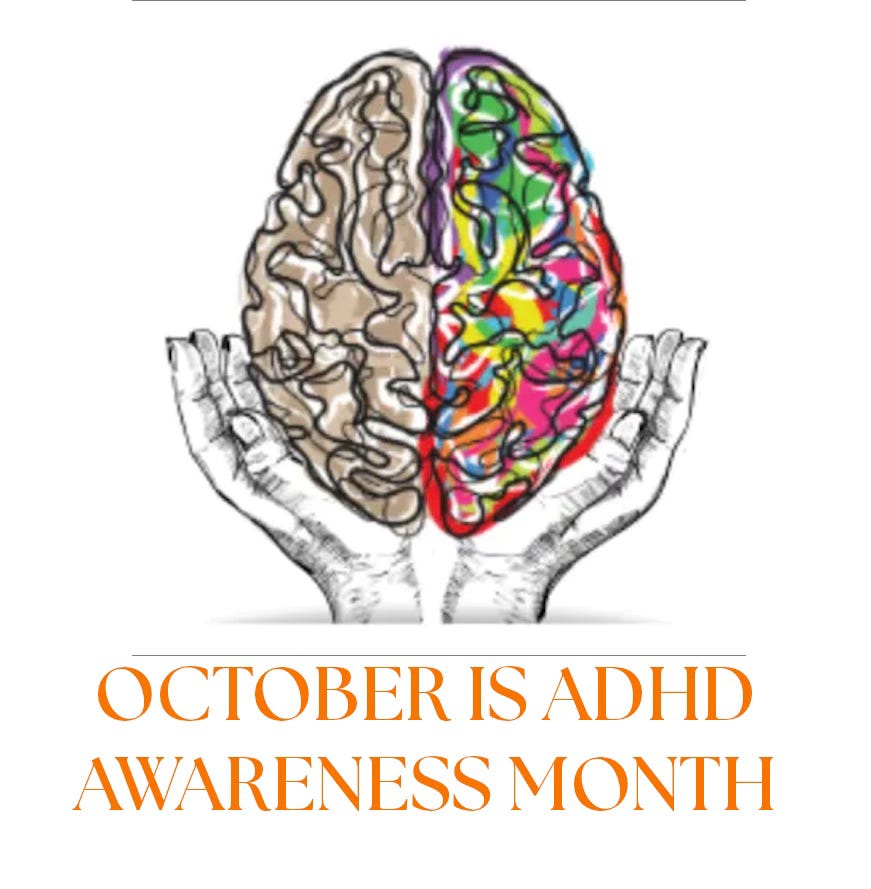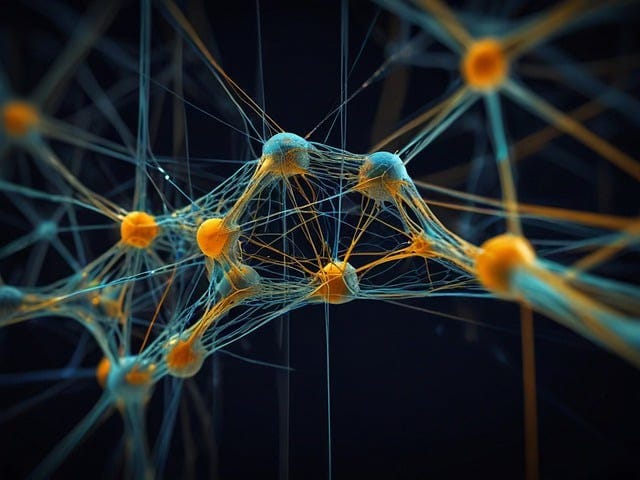Having ADHD and trying to focus on a task often feels like trying to tune into a single radio station, but only hearing static mixed with snippets from other channels. ADHD is fundamentally about difficulties in regulating attention, and there’s a wealth of neuroscience that explains why this happens.
Why should I learn about neuroscience?
I firmly believe that knowledge is power. Understanding scientific concepts and being able to explain them confidently has several important benefits.
First, grounding our experience of ADHD in brain science makes it harder for uninformed or sceptical individuals to dismiss it. When we can explain ADHD in terms of how the brain functions, our lived experiences carry more weight.
Second, learning how your ADHD brain works—much like other ADHD brains, and very differently from neurotypical brains—helps normalise your experience. Instead of thinking, "I’m weird, it’s my fault," you can shift to, "This is typical of ADHD. It’s just how I’m wired, and it’s not my fault." In this way, understanding the brain can make ADHD challenges feel less like personal failings.
Third, knowing how your brain functions can help you understand why certain treatments, like medications or therapies, work. This knowledge can boost your confidence in your treatment choices and reinforce the belief that meaningful change is possible.
Types of attention – a recap
In a previous post, I discussed this topic in more detail. Here's a quick recap of the different types of attention:
Selective Attention: Focusing on a specific stimulus while filtering out distractions.
Divided Attention: Attending to multiple tasks or stimuli simultaneously.
Sustained Attention: Maintaining focus on a task or stimulus over an extended period.
Executive Attention: Monitoring and resolving conflicts between different stimuli or tasks and switching focus when needed
Orienting: Directing focus toward a particular location or stimulus.
Neuroscientifically, attention is a dynamic interplay between various neurotransmitters, brain networks and circuits.
Image of a neural network- by patrypguerreiro from Pixabay
The role of neurotransmitters
ADHD involves several neurotransmitters that impact attention and focus:
Dopamine: deficiency of dopamine is the central problem in ADHD. The most common ADHD medications increase dopamine levels in the brain by blocking dopamine reuptake or increasing dopamine release. This helps improve attention, focus, and impulse control. This is how stimulants, such as methylphenidate (trade names Ritalin and Concerta) and the amphetamines such as lisdexamfetamine (trade name Elvanse) primarily work.
Noradrenaline: Atomoxetine (trade name Strattera) is a non-stimulant medication, that inhibits noradrenaline reuptake and improves attention. It can additionally reduce impulsivity and hyperactivity. Guanfacine, (trade name Intuniv) is another non-stimulant working on noradrenaline receptors. It can improve symptoms such as emotional hypersensitivity, hyperarousal, and social aggression.
GABA and Acetylcholine: also involved in enhancing attention but there are currently no medications that act by targeting them.
Image of neurotransmitters binding to receptors on individual brain cells - by Lakshmiraman Oza from Pixabay
Key Brain Networks Involved in Attention
Attention is managed by several brain networks:
Ventral Attention Network (VAN): controls automatic, reflexive attention. It grabs your focus when something unexpected happens, like a loud noise, without you trying.
Task Positive Network (TPN): handles intentional, goal-directed attention. This is when you consciously focus on a task and block out distractions. Think of it as the "focus" network.
Default Mode Network (DMN): active when you're not focused on a task, like when you're daydreaming or reflecting. It’s the "mind-wandering" network.
Salience Network (SN): Decides what’s important, both internally (like pain or emotions) and externally (like sudden noises). It helps switch between resting (DMN) and focused (TPN) states.
Executive Control Network (ECN): Manages planning, decision-making, problem-solving and staying focused on goals.
These networks work together. The VAN and SN shift attention to important things, while the ECN controls how you respond.
The ADHD brain functions differently
In people without ADHD, the DMN (mind-wandering) and TPN (mind-focusing) networks work in opposites—when one is on, the other switches off. In ADHD, this "on-off" relationship is weak. So, even when you're trying to focus, the mind-wandering DMN stays active.
This leads to lapses in attention. For example, you might try to focus on paying bills, but because the DMN doesn’t fully switch off, a nearby magazine can easily distract you. The emotional pull of that distraction can overwhelm your focus, pulling you away from the task at hand.
The ADHD brain is structurally different
Numerous brain imaging studies show that the brains of people with ADHD have reduced cortical thickness and reduced whole brain and grey matter volume, especially in the frontal lobes. These structural differences correlate with the different connectivity between the brain networks responsible for attention and cognitive control function, like the weaker interaction between the DMN (mind-wandering) and TPN (mind-focusing) networks.
Research also suggests that both the structural differences and ADHD symptoms may stem from the same root cause. A genetic dopamine deficiency in ADHD can disrupt brain development by "pruning" connections between individual neurons. This altered network connectivity pattern may continue into adulthood, affecting attention and focus.
All brains are neuroplastic
Neuroplasticity means the brain can reorganise its connections and create new pathways in response to learning, experiences, or even injury, for example after a stroke. When you practice something new, your brain strengthens the connections between the cells involved in that task, making it easier to do over time. This is why people recover bodily functions after a stroke if they consistently have physiotherapy.
The cognitive exercises of CBT and repeated attentional training, such as meditation, similarly act as physiotherapy for the brain. Mindfulness training has been shown to increase grey matter density in the prefrontal cortex and improve connectivity between attentional networks – it’s not just that people say they feel better after mindfulness training, their brain scans show structural and functional changes consistent with the experience of improved wellbeing.
How can I apply this knowledge to my life?
By explaining to others how neurotransmitters, brain networks, and structural differences influence attention, you can reframe ADHD challenges as part of your brain’s unique wiring - not as your personal failures.
Importantly, neuroplasticity offers hope. There are lots of resources available to you for consistent mental training, including mindfulness, meditation, CBT and coaching for ADHD. These can help strengthen your ability to focus and manage distractions.
ADHD is not your fault, but taking charge of it is in your hands
I’ll be sharing a lot of these skills in coming weeks, so please do consider subscribing to ADHD Wellness and Wisdom.








